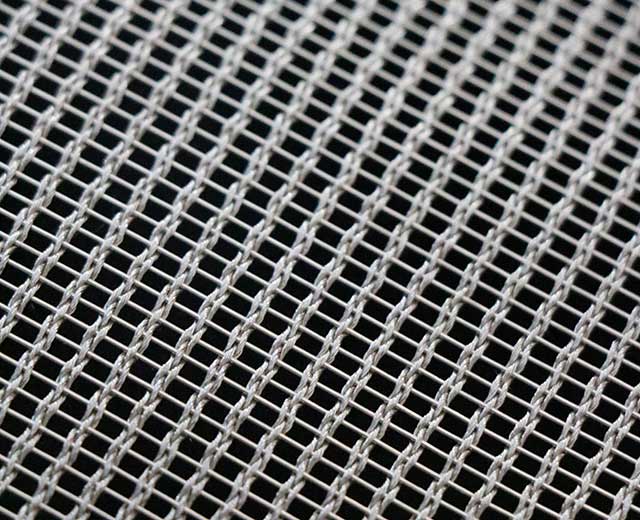2020-12-18
As an external cladding solution architectural mesh forms a semi-transparent outer skin that acts both as a sun shield but also reduces heat losses. Its aesthetic appeal comes from the reflective nature of
stainless steel mesh which can alter its appearance during the daytime according to the weather conditions creating a shimmering metallic effect at certain hours of the day. At night time lighting effects on wire mesh combined with colour can create really spectacular optical effects. Today wire mesh with integrated LED lighting opens up new possibilities to highlight façades and create spectacular displays at night.

Sometimes architects and designers use wire mesh to screen off certain less attractive parts of the building. In sunny climates wire mesh outer skins can also act as sun blinds: as the sun rises in the sky direct sunlight penetration is reduced progressively reaching maximum effectiveness when the sun is at its highest point. Additionally most patterns offer excellent transparency from inside the buildings looking directly through the mesh.
Produced from fire resistant stainless steel these mesh panels are virtually maintenance-free. They are also self-supporting and therefore much easier to install compared to similar meshes made with flexible cables that require tensioning on site. Despite being manufactured from rigid wires the majority of these meshes can however be applied to curved surfaces and frames on site without preforming. Whilst presenting a high quality of appearance these meshes are very cost effective.
Wire mesh is also widely used for external applications such as balustrades or guard rails for outdoor staircases, pedestrian footbridges and landscape furniture such as light masts. The wire diameters and mesh apertures can be individually designed to the required specifications.

Recommended Read
Metal decorative mesh is made of metal rods and wires
Woven wire drapery with a variety of uses, for interior and